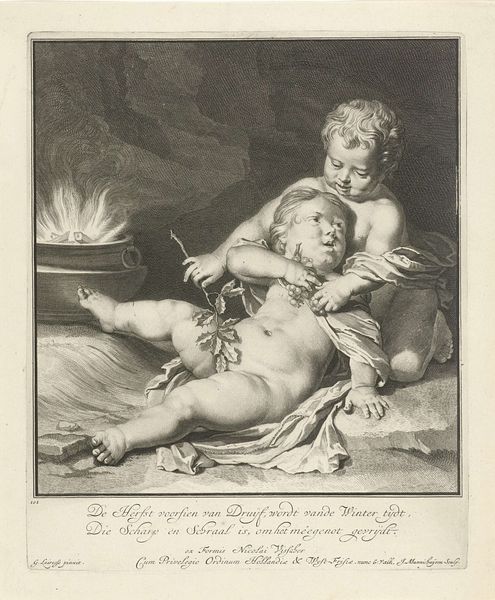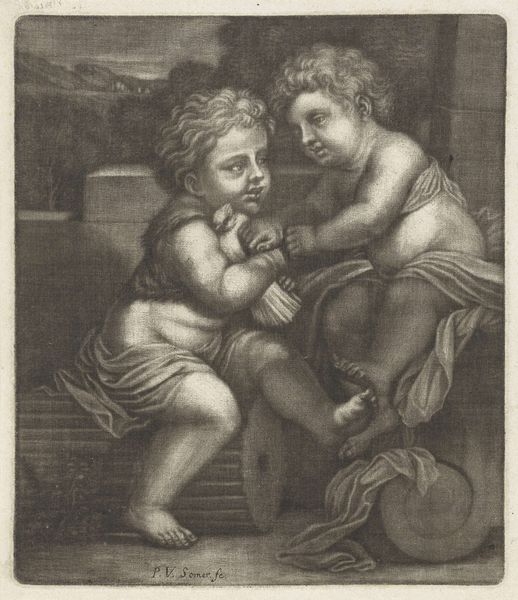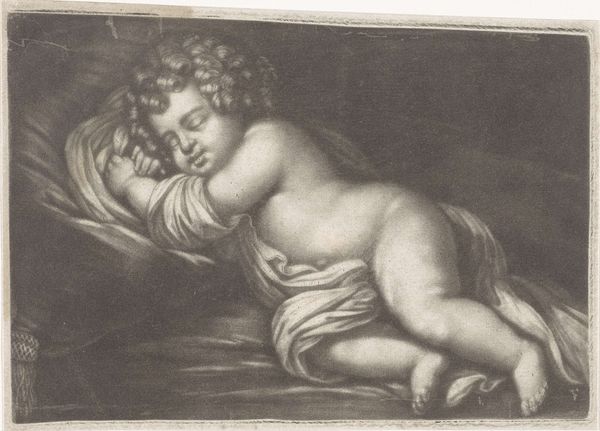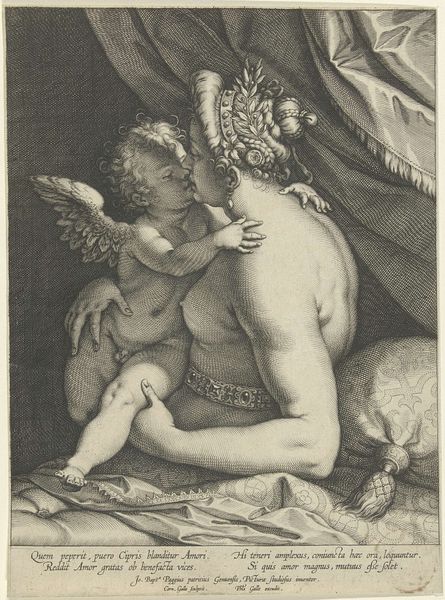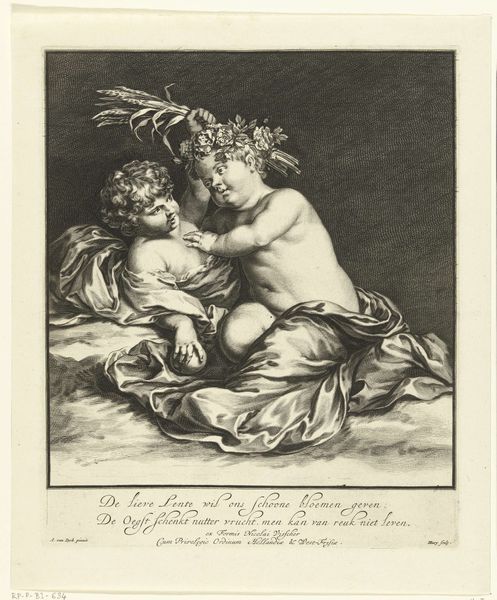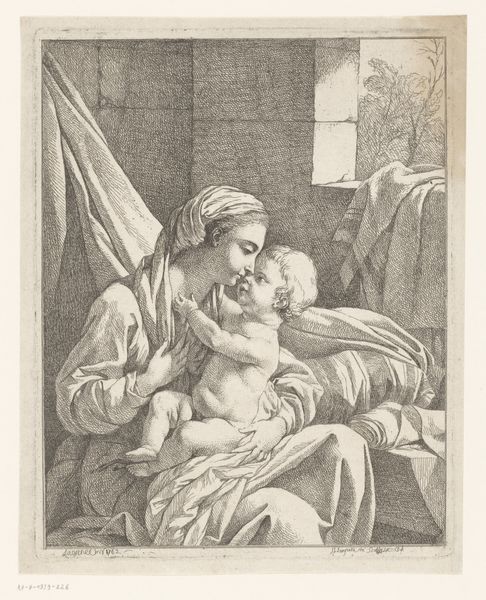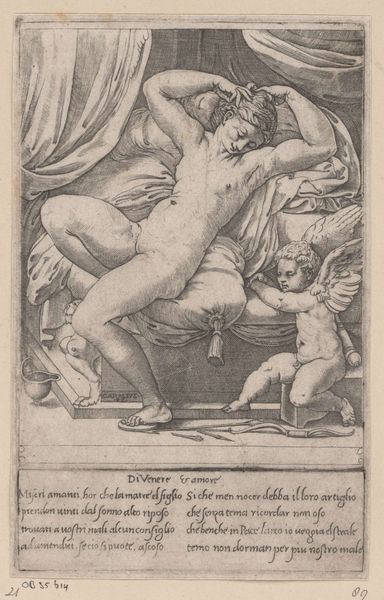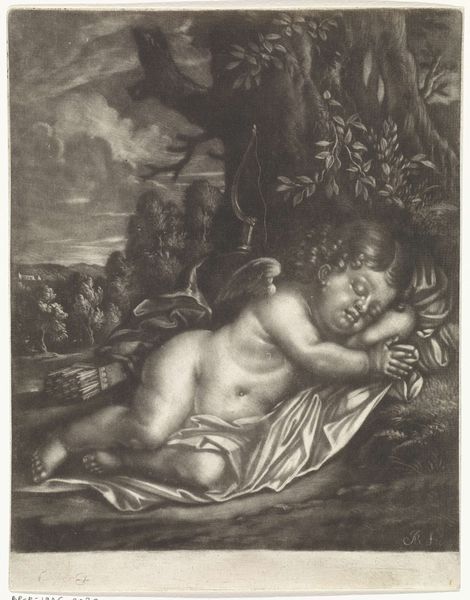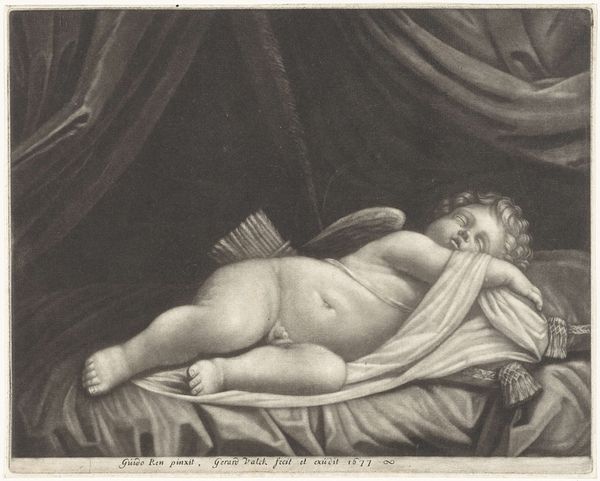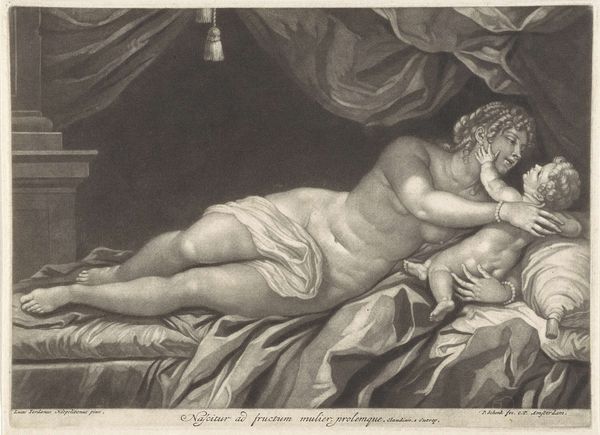
engraving
#
portrait
#
allegory
#
baroque
#
charcoal drawing
#
portrait reference
#
portrait drawing
#
nude
#
engraving
#
erotic-art
Dimensions: height 322 mm, width 276 mm, height 30 mm, width 276 mm
Copyright: Rijks Museum: Open Domain
Editor: This engraving, "Venus en Amor" by Jan Verkolje I, created in 1682, is quite striking. There's a strong emotional dynamic between the figures – almost a playful intimacy. How does this work speak to you? Curator: What I see is a potent demonstration of how the Baroque era grappled with representing both classical ideals and contemporary social mores. The figures of Venus and Cupid are, of course, lifted from classical mythology, but Verkolje situates them within a distinctly 17th-century, arguably Dutch, understanding of eroticism and maternal affection. It begs the question, for whom was this image intended? Editor: That’s interesting. So you are saying the choice to depict them this way tells us something about the society it was made for? Curator: Exactly. The public role of art in this period was often to reinforce or subtly negotiate social norms. Consider the rise of print culture: engravings like these circulated widely, reaching audiences beyond the elite circles who commissioned paintings. They shaped the visual landscape. Would you agree this representation challenges or upholds prevailing ideals around women at that time? Editor: Hmm, it's tricky. On one hand, Venus is nude, embracing erotic themes, potentially subverting the ideal woman. But on the other, she’s also a mother, which reinforces traditional roles. Curator: Precisely the tension at play! The ambiguity is deliberate and powerful. Verkolje used this image to cater to specific desires while potentially staying on the right side of morality, as dictated by the market. Editor: I hadn’t thought about it that way. It’s more complex than just a simple depiction of mythology. I am curious how much his personal opinion influenced the representation. Curator: The artist's individual sentiment is always woven into the piece, although it’s very hard to pinpoint, and more often secondary to the larger cultural narratives at play. Editor: Thanks. This perspective has completely changed how I view this piece, it gives this engraving much more depth.
Comments
No comments
Be the first to comment and join the conversation on the ultimate creative platform.
